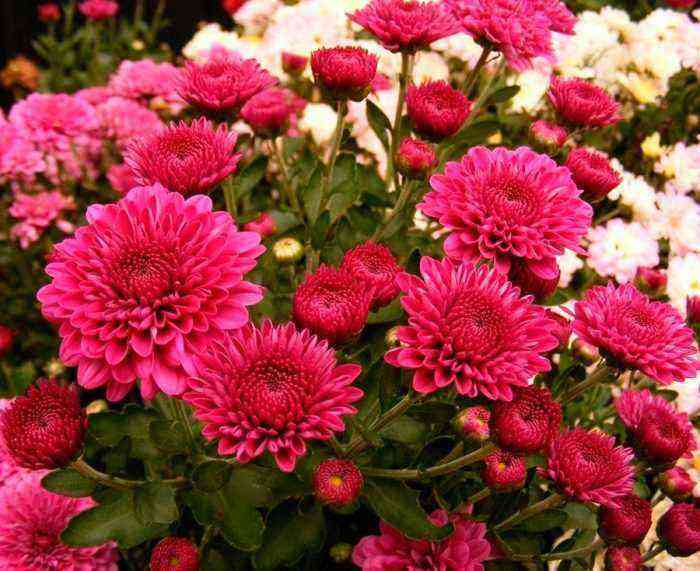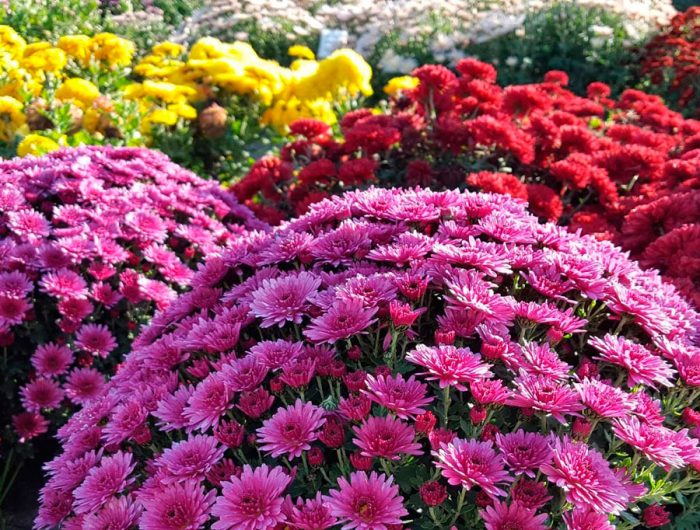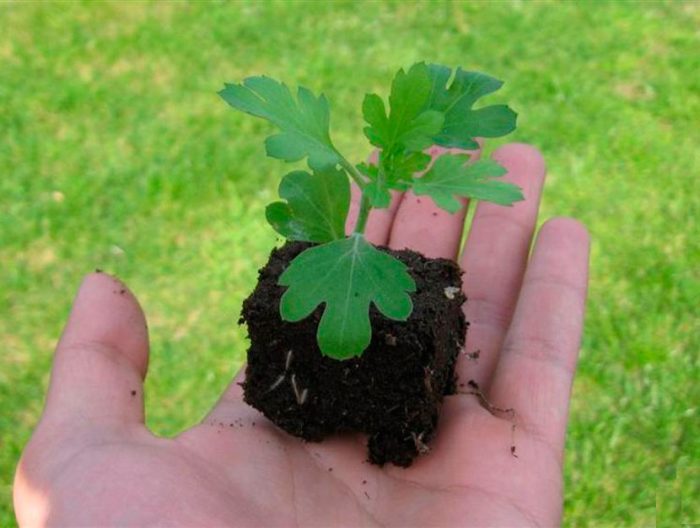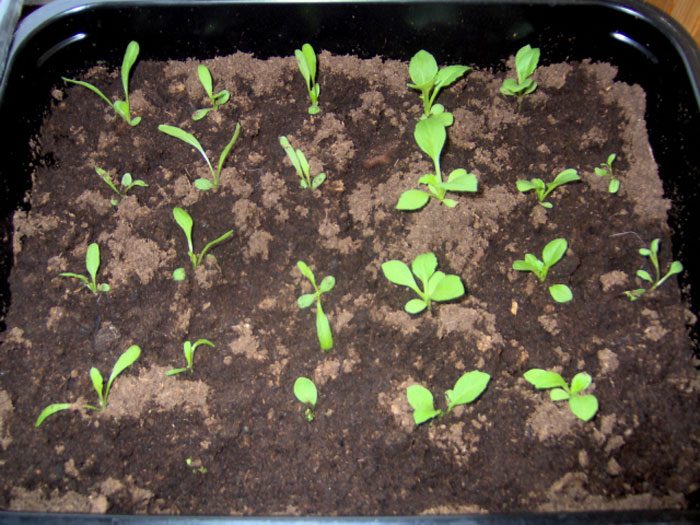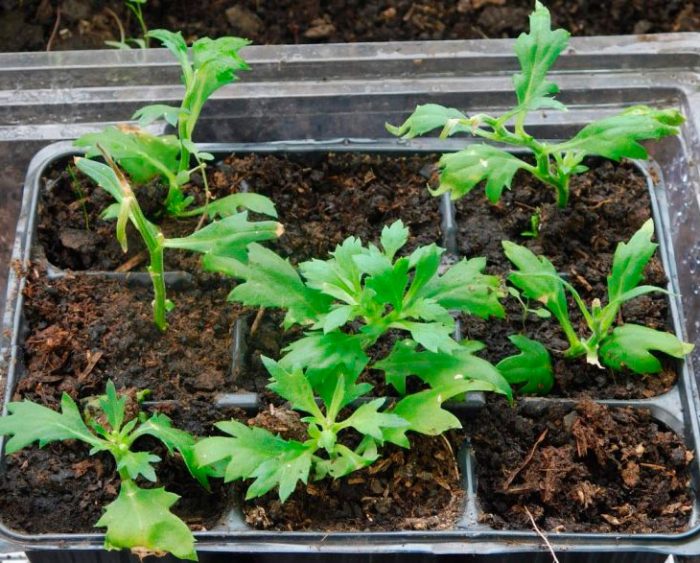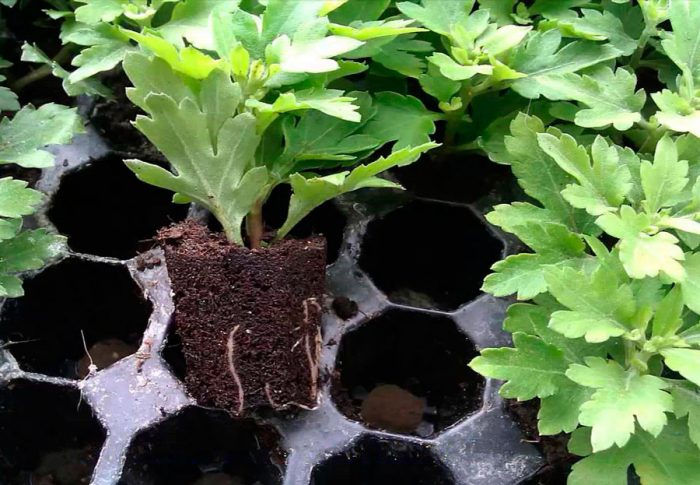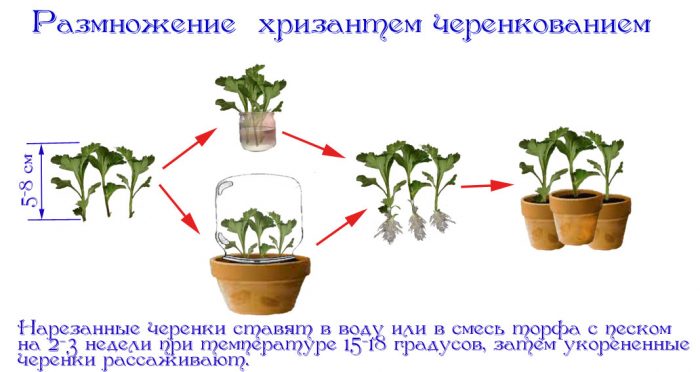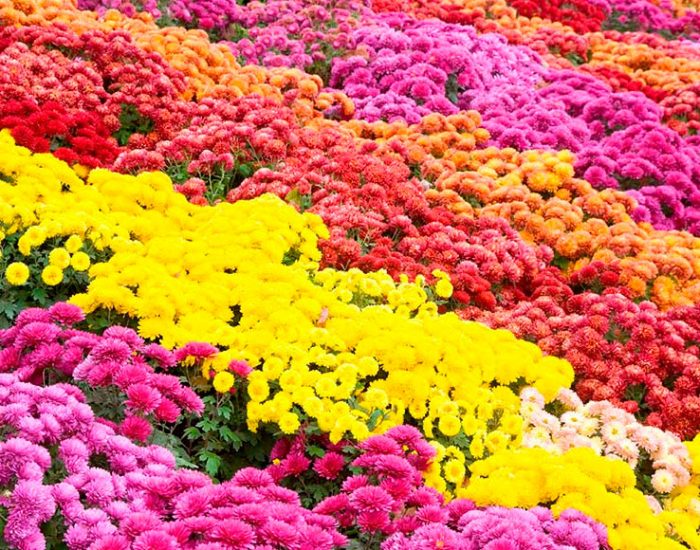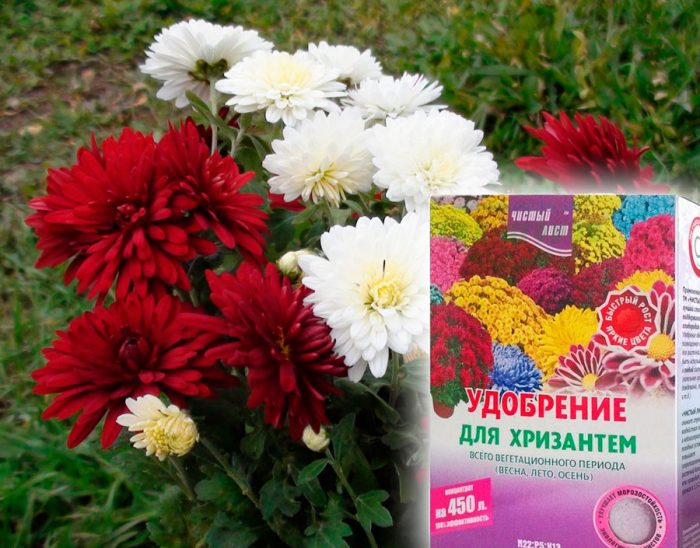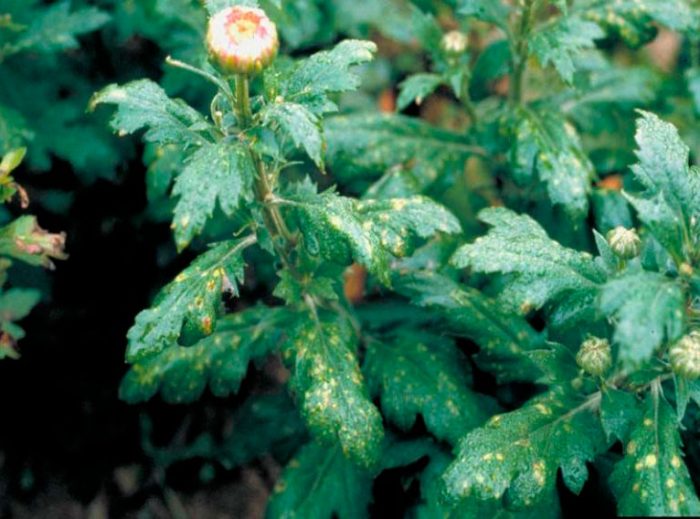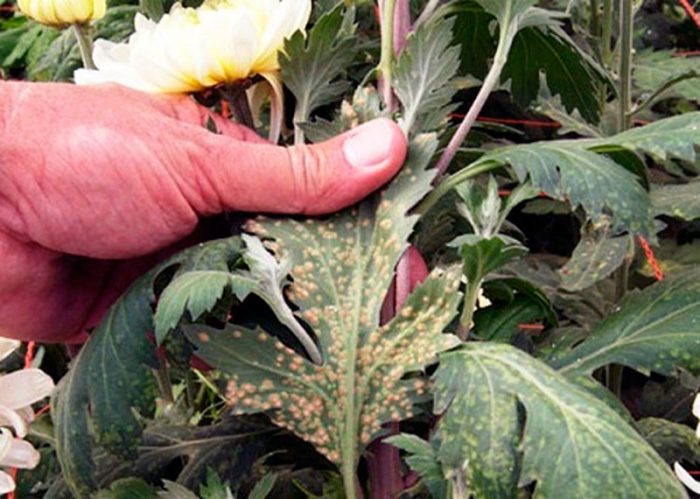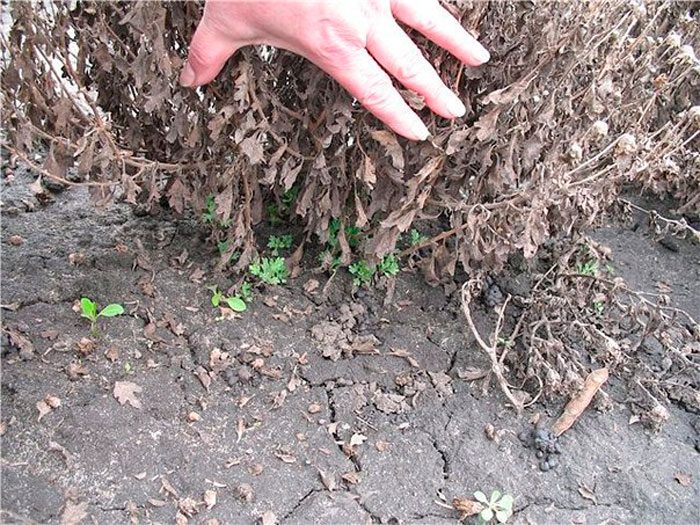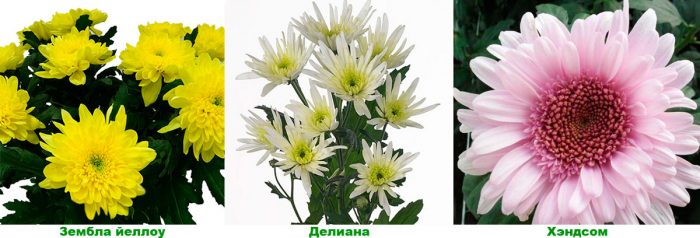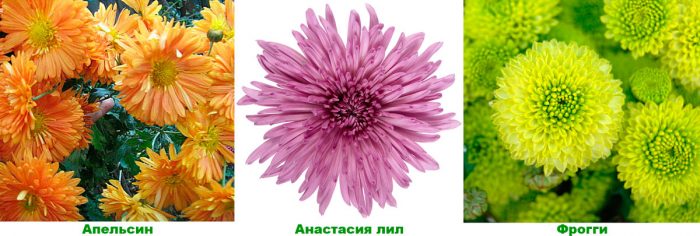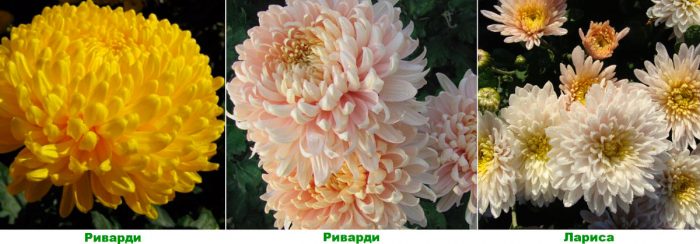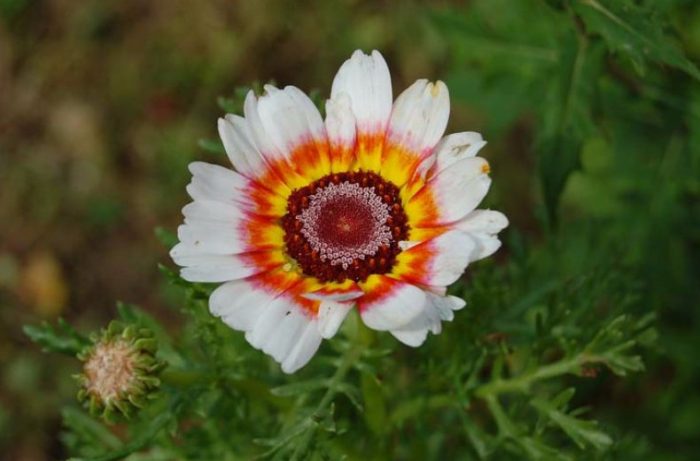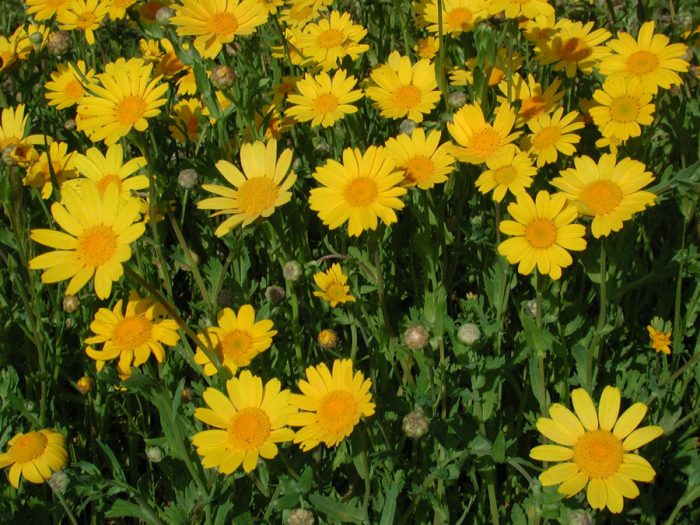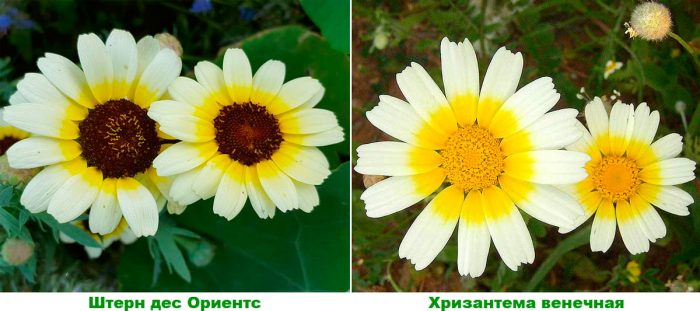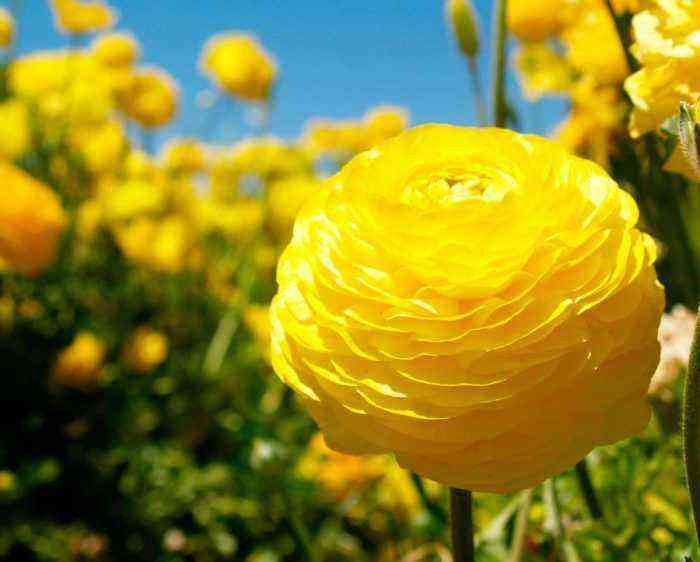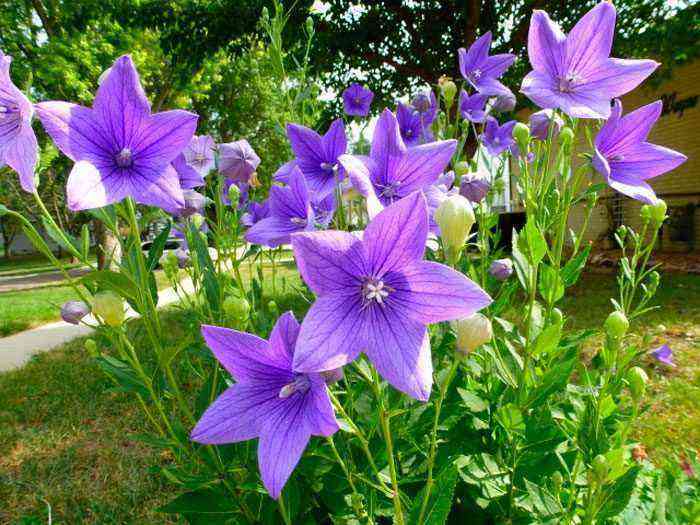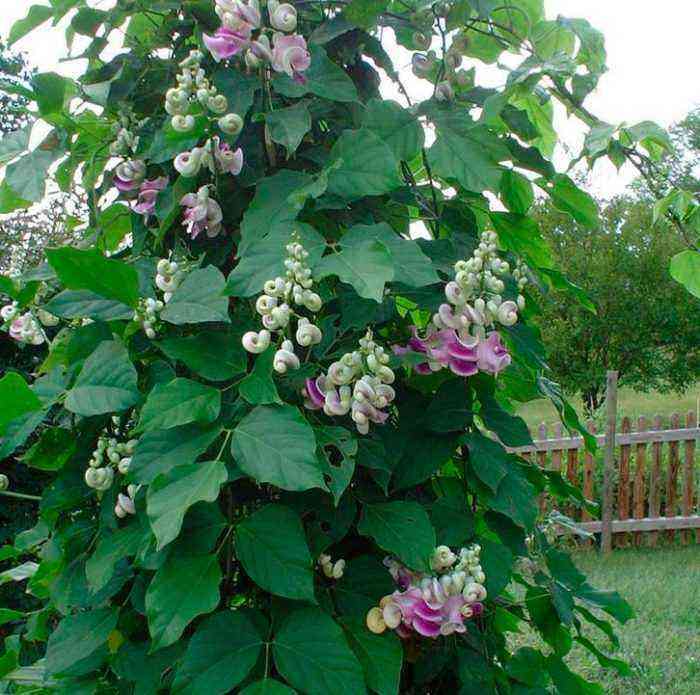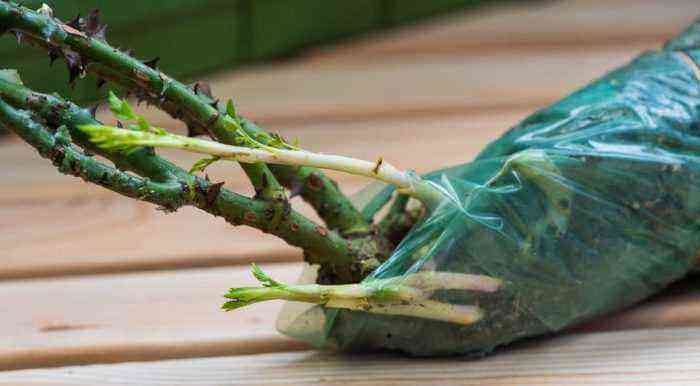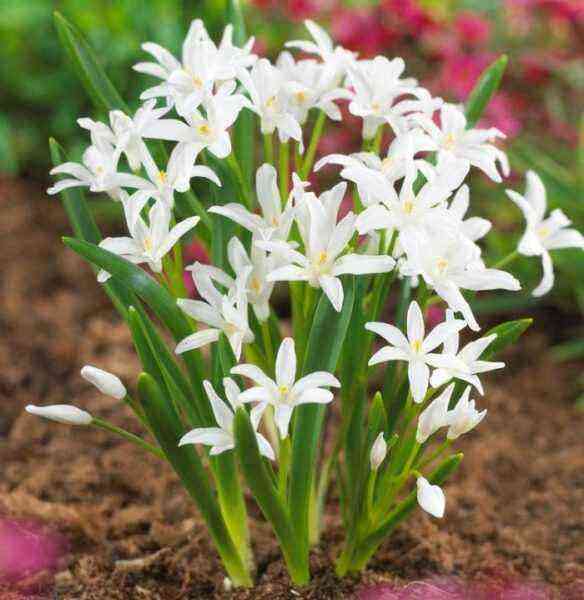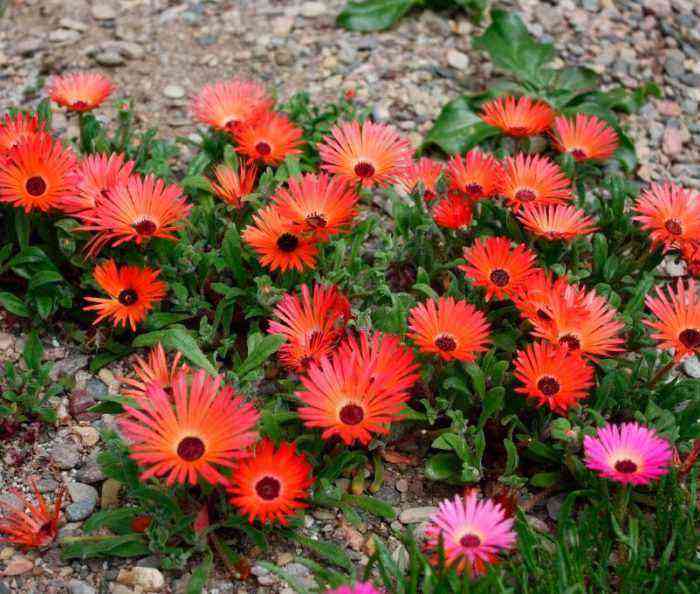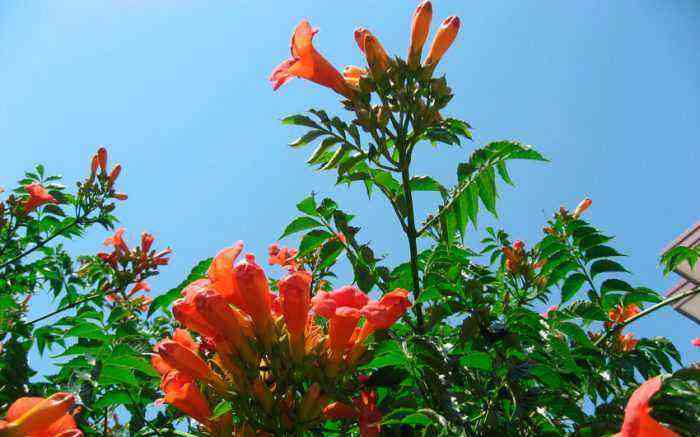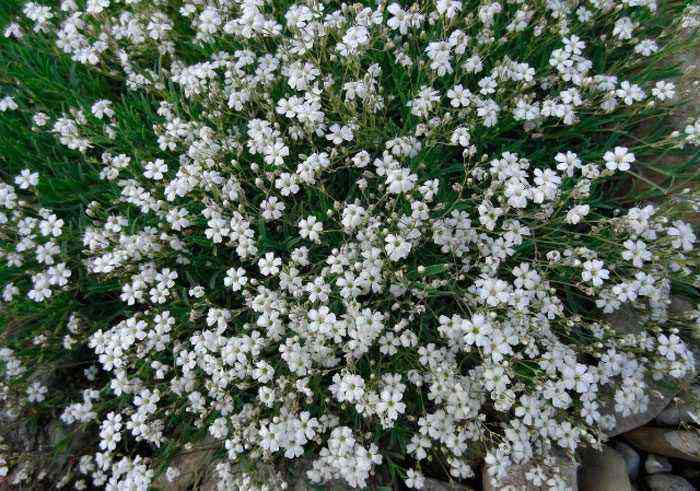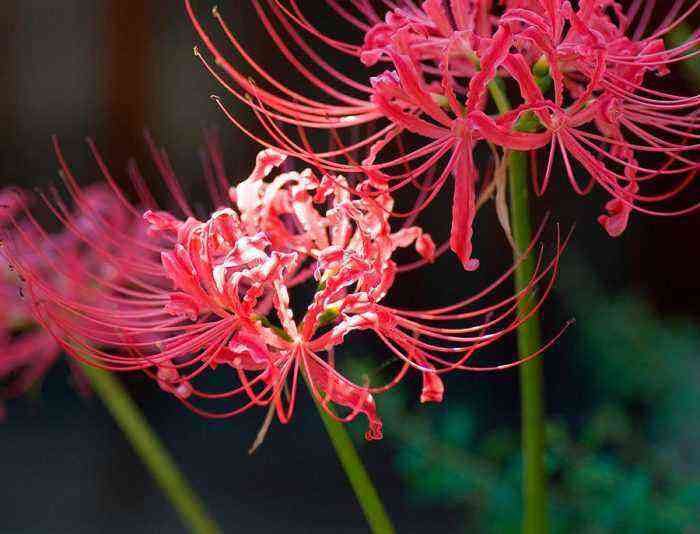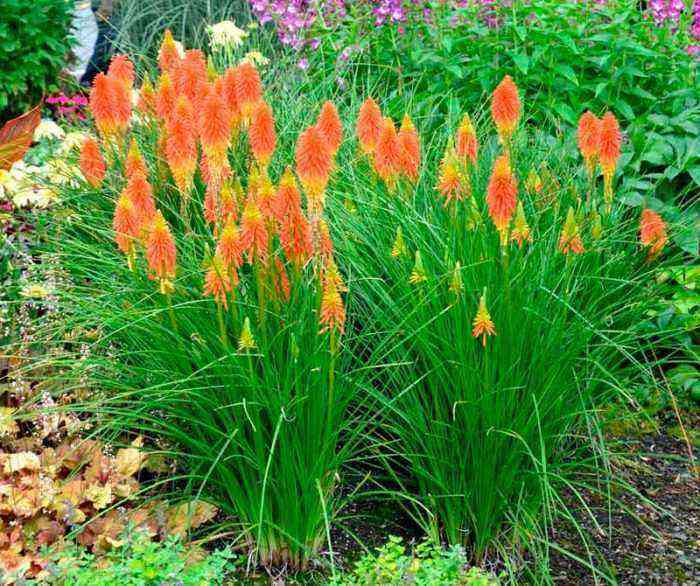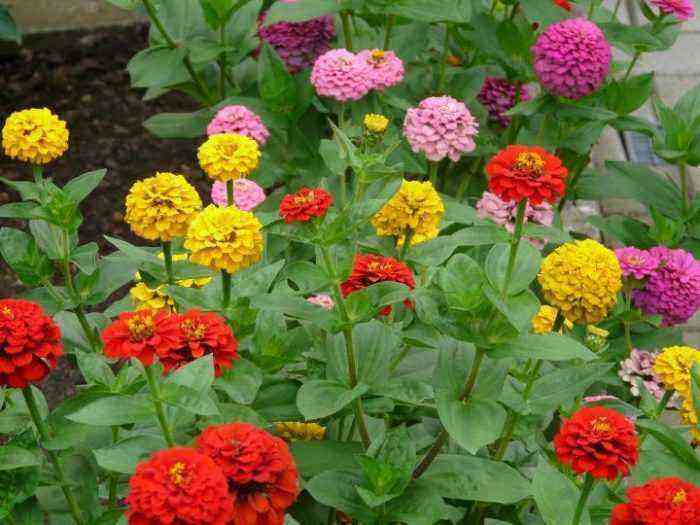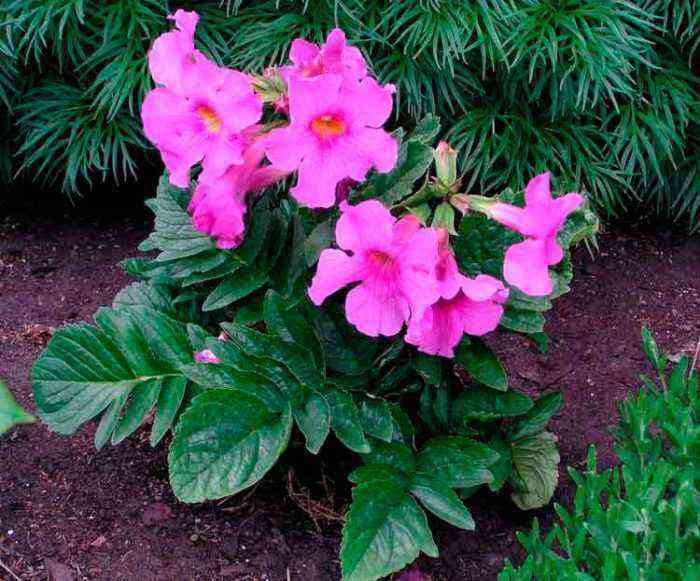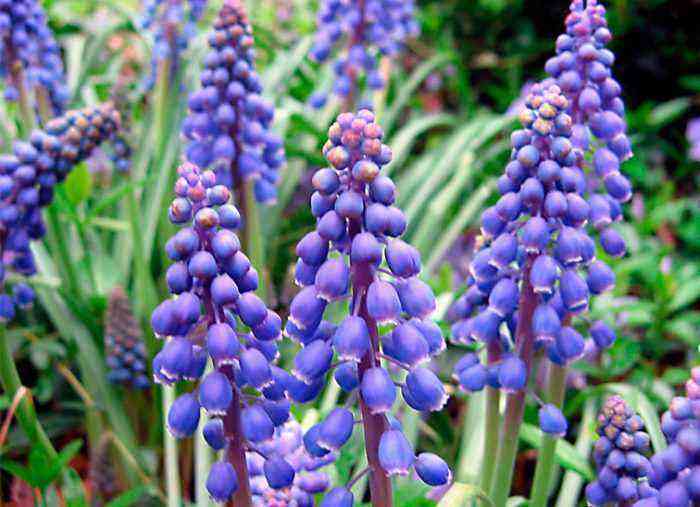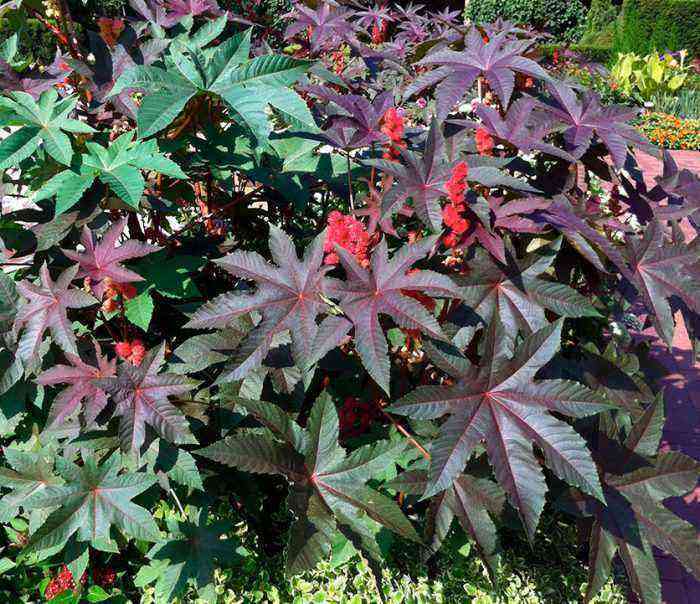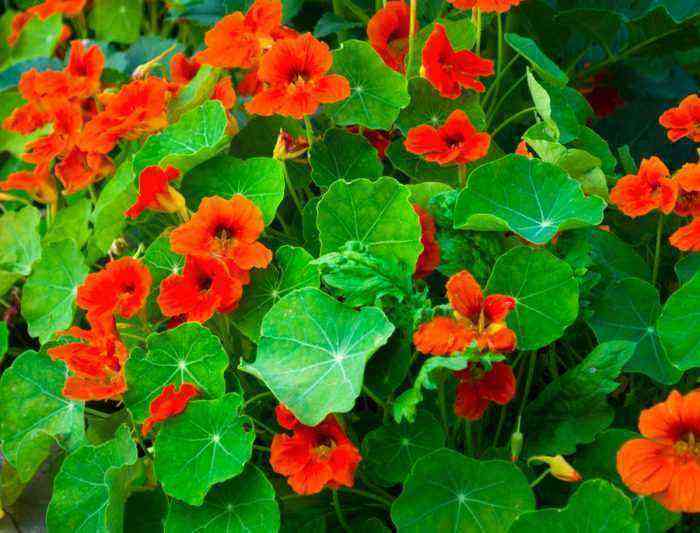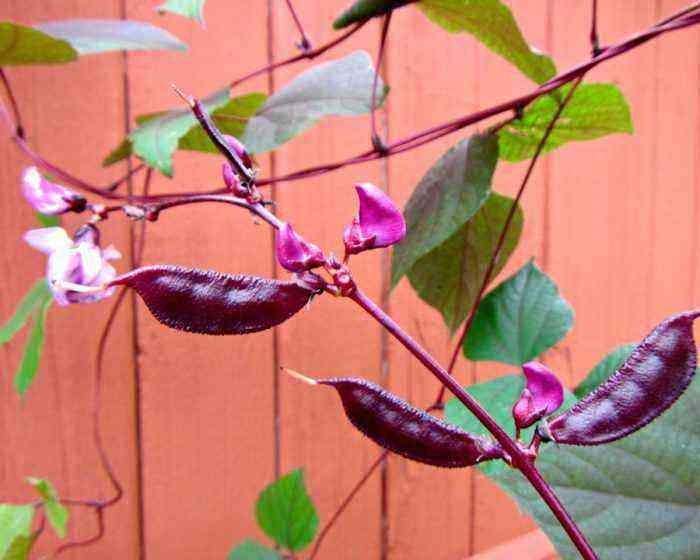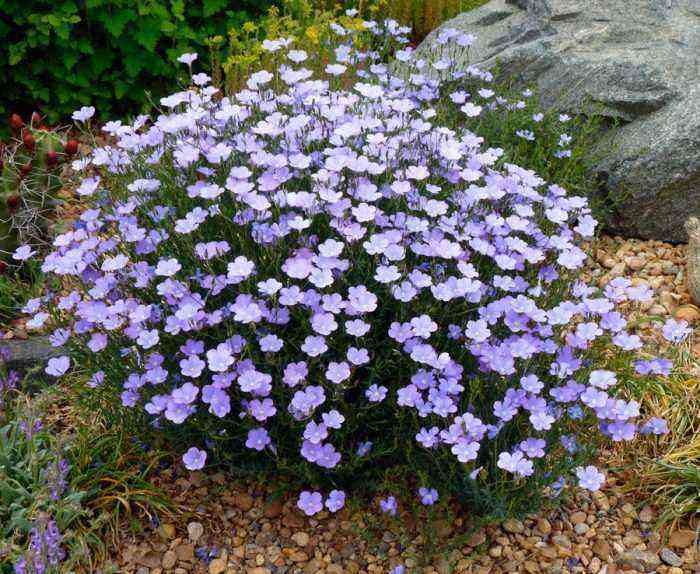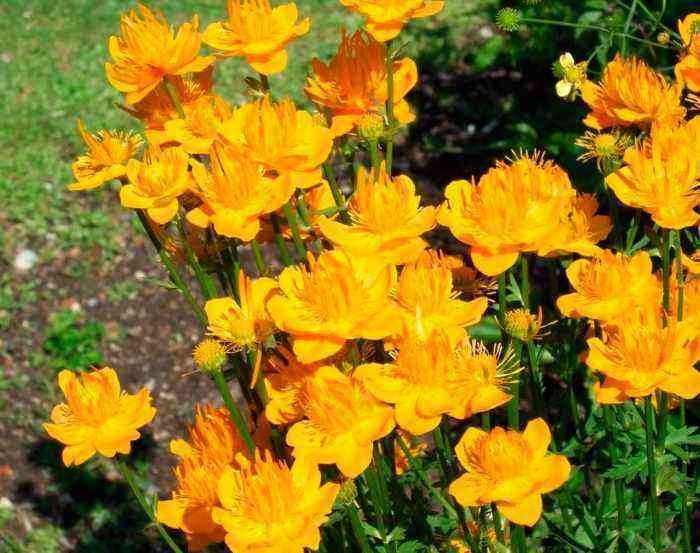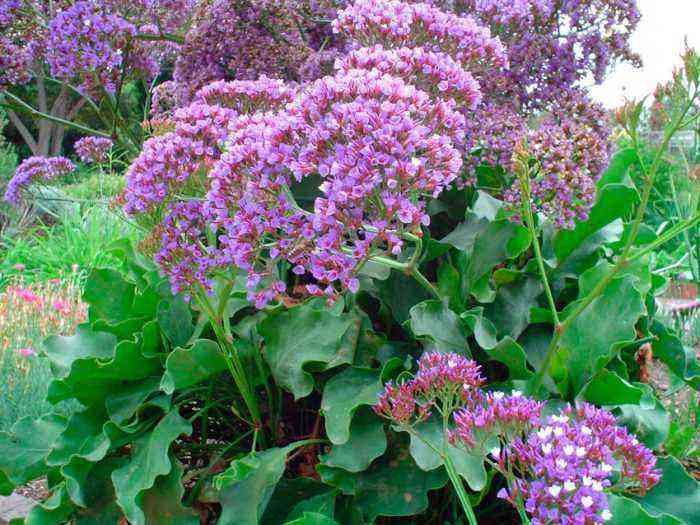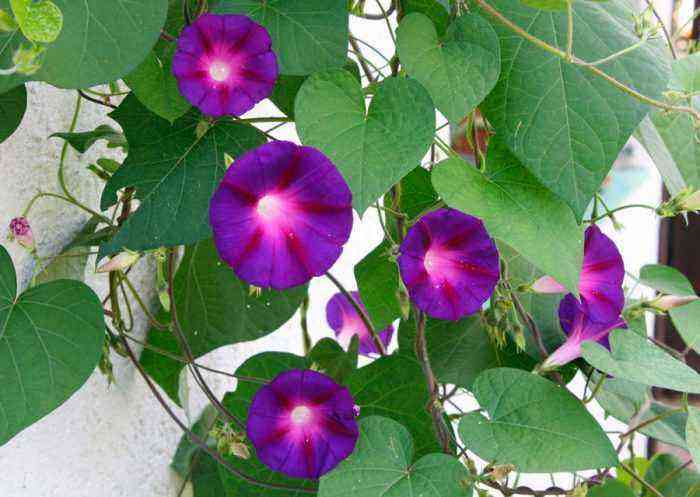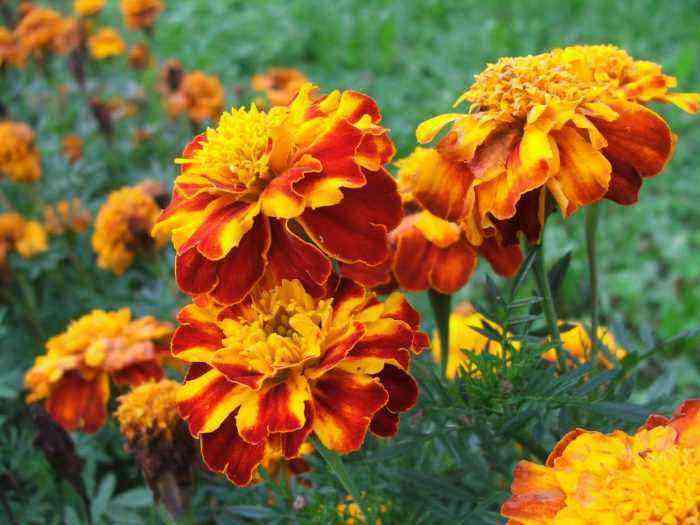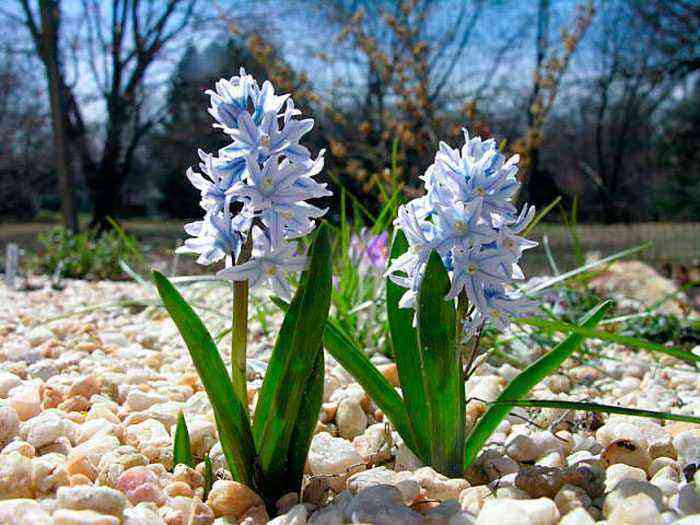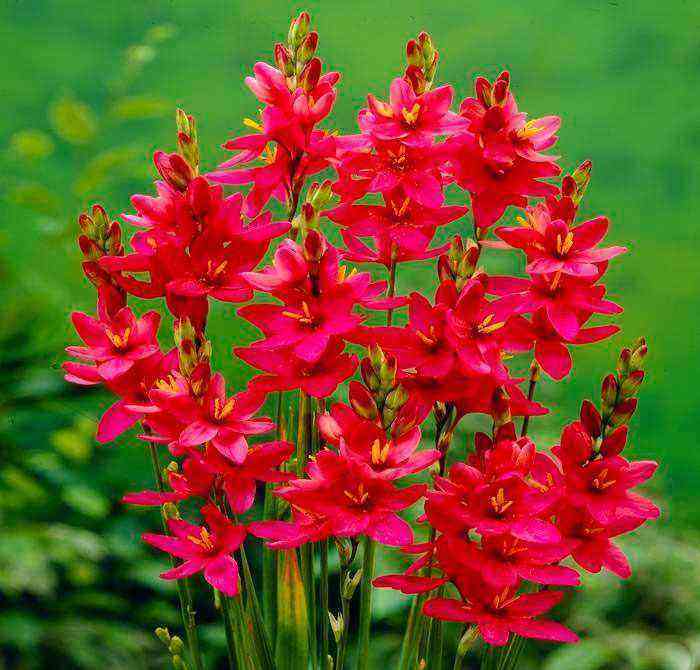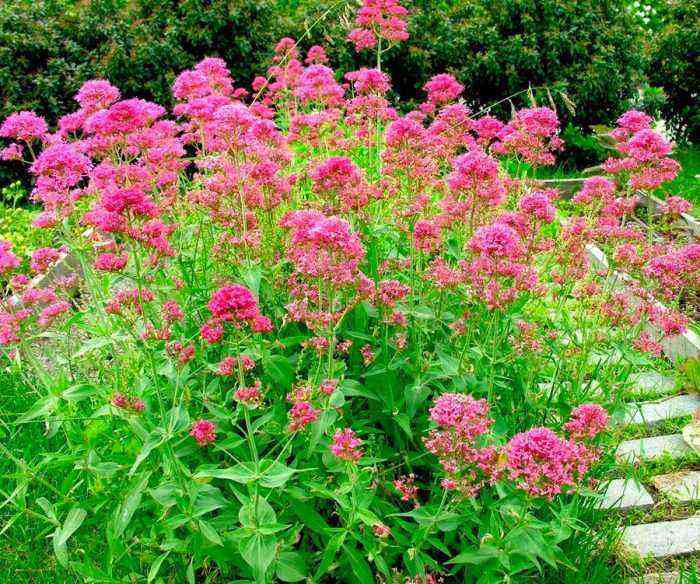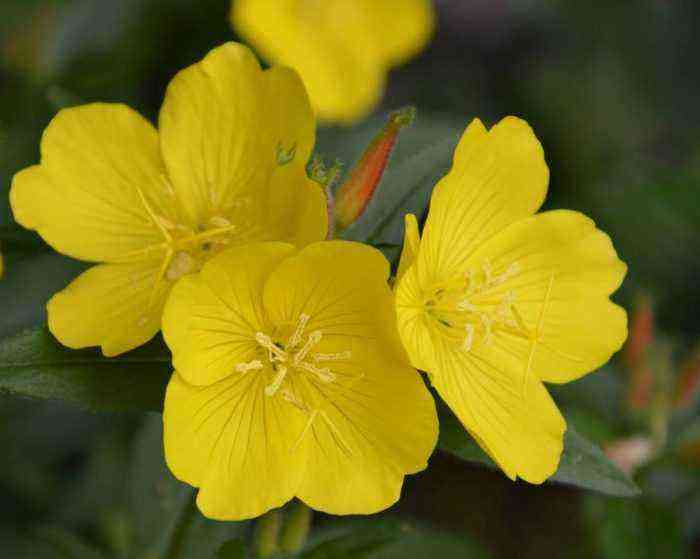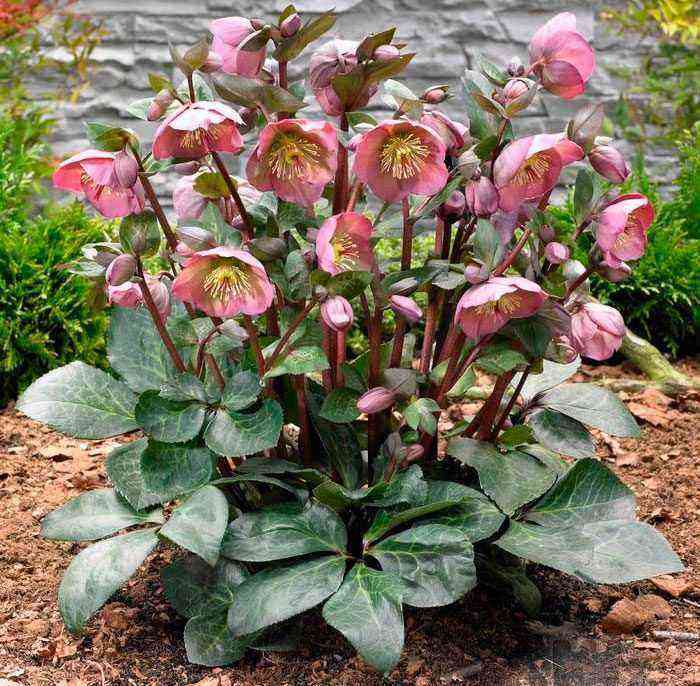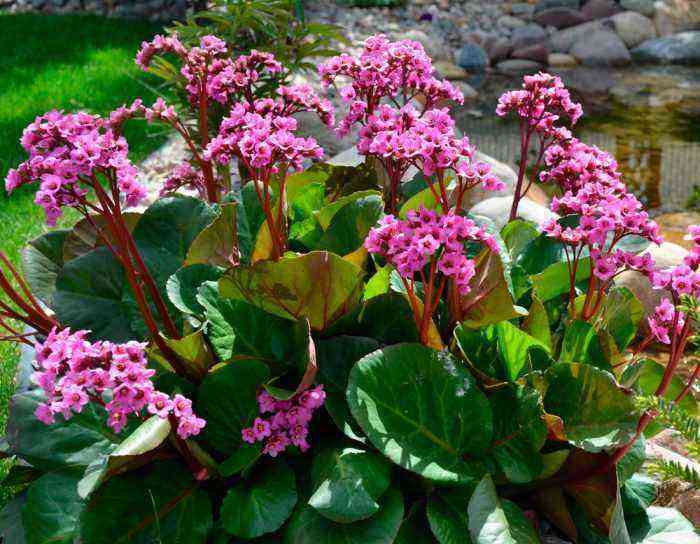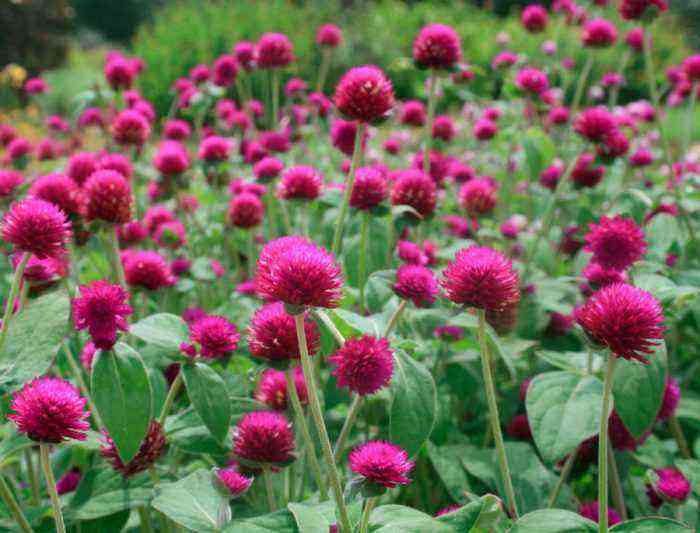The herbaceous annual and perennial plant chrysanthemum (Chrysanthemum) is a member of the Asteraceae family. From Greek, the name of the plant is translated as “flower-sun” or “golden-colored” the fact is that in most species the inflorescences are colored yellow. This genus, according to the GRIN website, unites about 29 species that are naturally found in the temperate and northern zones, and most often in Asia. Archaeologists are sure that the ancient Chinese were growing chrysanthemums more than 2,5 thousand years ago, they ate the petals of this plant. And also the chrysanthemum was mentioned by Confucius himself in the treatise “Spring and Autumn”. Later, the Japanese began to grow the plant, who idolized chrysanthemum so much that only members of the imperial family had the right to wear clothes with its image. In Europe, the flower appeared only in the 18th century, but it became popular with gardeners only in the 19th century. Today, the garden chrysanthemum (Chrysanthemum hortorum) is the most popular among gardeners, scientists believe that it was formed as a result of the crossing of two Asian species: large-flowered chrysanthemum (Chrysanthemum morifoolium), whose homeland is China, and also small-flowered chrysanthemum (Chrysanthemum indicum) from Japan … However, some experts believe that the garden chrysanthemum appeared due to the crossing of the Chinese chrysanthemum and the small-flowered Indian chrysanthemum. There are a huge number of varieties of chrysanthemum, while breeders are still working on the development of new unusual varieties.
Brief description of cultivation
- Landing… In April, seedlings are sown, and in May, seeds are sown in open soil. Sowing can be carried out before winter, but no later than 15 days before the first frost.
- Flowering… In the last weeks of the summer and in the fall.
- Illumination… Needs lots of bright sunlight.
- Ground… The soil should be fertile, dry, well-permeable to water, neutral or slightly acidic, loamy.
- Watering… Needs abundant watering.
- Fertilizer… Three times during the season, for this, organic matter and mineral fertilizers in liquid form are alternately used. For the first time, fertilizers are applied to the soil seven weeks after planting.
- Reproduction… Annual species and varieties are propagated only by seeds, and perennials – mainly by cuttings and dividing the bush.
- Harmful insects… Nematodes, aphids, meadow bugs.
- disease… Gray rot, rust, septoria, powdery mildew, bacterial root cancer.
Chrysanthemum features
Chrysanthemums are represented by perennial or annual dwarf shrubs and herbaceous plants. The branched rhizome grows parallel to the soil surface. The stems may have pubescence on the surface, but they may also be glabrous. Simple alternate naked or pubescent leaf plates differ in size and shape: serrated, notched or dissected. As a rule, foliage is colored greenish, but it can also be dark green. Most often, small flowers are part of the inflorescence-basket, which in some cases can be quite large. The basket consists of single-row lingual marginal and median tubular flowers, but in most hybrid varieties they are arranged in multiple rows, as a result of forming a lush inflorescence, which is called terry chrysanthemum. The fruit is an achene. Today, gardeners cultivate varieties and types of the so-called mulberry or garden chrysanthemum. It is also sometimes referred to as chrysanthemum chrysanthemum. This group of varieties and hybrids is very complex, and they also have a confusing history.
Growing chrysanthemums from seeds
Sowing in the ground
Chrysanthemums are easiest to propagate by dividing the bush and cuttings. However, very often, chrysanthemum grown from the seed becomes the pride of the gardener. The seeds are used for reproduction of both annuals and perennials, for example, the Korean chrysanthemum. Below we will talk about growing such a flower from seeds using the example of annuals.
In May, after the return frosts are left behind, planting holes should be made on the site, the distance between which should be from 20 to 25 centimeters. They are spilled with lukewarm water and 2 or 3 seeds are placed in them. When the holes are covered with soil, they need to be covered from above with a garden film, thereby you will be able to keep the moisture and heat necessary for seed germination in the soil. After the first seedlings appear, the shelter is removed, and the surface of the soil on the site is carefully loosened, while removing all weeds. One and a half weeks after the emergence of seedlings, fertilizing is carried out with a solution of “Rainbow” or “Ideal” of a very weak concentration.
After the seedlings reach a height of 70 to 100 mm, they are thinned out. As a result, in each hole there should be one strongest plant with 3 or 4 true leaf plates formed. If desired, extra seedlings can be transplanted to another place. Annual chrysanthemums grown from seeds will begin to bloom in August. In order for the bushes to please with early flowering, they are grown through seedlings.
Seeding on seedlings
To grow seedlings, you will need low boxes filled with a substrate, which includes humus, greenhouse soil and peat (1: 1: 1). The soil mixture can be bought in a specialized store, where it has already undergone pest control and disinfection. The self-prepared substrate must be sieved and calcined at a temperature of 110 to 130 degrees. At the bottom of the box, a good drainage layer is first made from expanded clay or pieces of brick. It is covered with a prepared substrate, and seed material is evenly distributed on its surface. When sowing seeds of perennials, they are not covered from above, but only slightly pressed into the soil mixture. And when sowing annuals, the seed material is sprinkled on top of the floor with a centimeter layer of the substrate. Water the crops with a sprayer with lukewarm water and cover the top of the container with foil (glass). Remove the crops in a warm place (from 23 to 25 degrees), systematically ventilate them and moisten the substrate from the spray bottle, preventing it from drying out. If everything is done correctly, the first seedlings should appear 10-15 days after sowing. As soon as this happens, the box is moved to a well-lit place. The shelter is not removed immediately, but gradually, so that the plant has time to get used to the new conditions. To begin with, the shelter is removed for 1 hour, then for a couple of hours, and so on, until the plant gets used to the new growth conditions.
When excessively dense seedlings appear after they grow up, they are dived into individual cups with the same substrate that is used for sowing seeds. Do this after the plants have formed from 2 to 4 true leaf plates; during transplantation, try not to injure their root system. Before proceeding with the dive, the dredge in the box is watered abundantly. When transplanting, discard too weak and elongated plants. In order for the seedlings to take root faster, after transplanting it is moistened from a sprayer with a solution of Epin or Zircon.
Care of seedlings
After picking, the seedlings are harvested in a cool (from 16 to 18 degrees) and well-lit place. Watering is carried out only if necessary, and feeding is carried out regularly once every 1 weeks, for this, a solution of complex mineral fertilizer is used. If necessary, supplement the seedlings with fluorescent lamps. Remember that the seedlings of such a culture are characterized by extremely slow growth, so, after 2 weeks, its height reaches only about 6 centimeters.
Outdoor planting and reproduction
What time to plant
Chrysanthemum seedlings are planted in the spring after warm weather sets in, and spring frosts are left behind. As a rule, this time falls on the last days of May or the first days of June. You can plant seedlings in the fall, but no later than half a month before the first frost.
When choosing a site for planting, one must take into account that the culture loves light and warmth, and it reacts extremely negatively to stagnant liquid in the root system. In this regard, the site should be elevated, protected from gusts of wind, and also be illuminated by the sun for at least 5 hours a day. It is best if the soil is fertile, loamy, slightly acidic or neutral. Clay or sandy soil must be improved by introducing organic matter. However, fresh manure cannot be introduced into the soil; it should be replaced with vermicompost or humus. It is necessary to introduce organic matter and mineral complex fertilizers into the soil immediately before planting seedlings. At the same time, keep in mind that if there are a lot of nutrients in the soil, then the green mass will begin to actively grow in the bushes, which will have a very bad effect on flowering.
Rules of landing
It is recommended to plant chrysanthemum seedlings in the garden on a rainy or cloudy day. It is more convenient to plant bushes in a trench, and not in planting holes, while a distance of 0,3 to 0,5 m must be left between them (depending on the type and variety). In order for the planted seedlings to take root faster, they are spilled with Kornevin’s solution (1 gram for 1 liter of water). When the plants are planted and watered, they are pinched, for this, the growing point is removed. Then it is recommended to cover the seedlings with any covering material, for example, lutrasil. This will create a favorable microclimate that seedlings need for normal rooting and growth. After the chrysanthemum takes root and starts growing, the shelter is removed.
Reproduction by cuttings
The culture can also be propagated by cuttings. Their harvesting is carried out in the spring after the air warms up to 21-26 degrees in the daytime, and return spring frosts have passed. To do this, use a sharp, sterilized knife, with which cuttings are cut from an adult bush, while using those stems that grow from the root of the flower, the lateral shoots will not work for this purpose. The stalk should be 60 to 70 mm long, and the cut is made a few millimeters above the bud with the leaf. At the cutting, the lower end is treated with a growth-stimulating agent, for example, a root. After that, it is planted in a container at an inclination of 35-45 degrees, which is filled with moistened fertile soil mixture, sprinkled on top with a two-centimeter layer of sand. Plant the cuttings so that they are only in the sand, without touching the substrate. At the time of rooting, the cuttings are placed on a well-lit windowsill, while making sure that the substrate in the container is slightly damp all the time. The optimum air temperature for rooting is from 15 to 18 degrees. If everything is done correctly, the roots will grow back after 15–20 days, after which the cuttings are transplanted into open soil.
Garden chrysanthemum care
Even an amateur gardener can grow a chrysanthemum in his garden, but in order for the bushes to be as lush, beautiful and not sick, you need to know a few tricks. For example, after the seedlings planted in open soil take root well, get stronger and form an eighth true leaf plate, they pinch it to make the bushes more lush. Soon, side shoots should appear on the plant, when this happens, pinch them too, as a result, your site will be decorated with spectacular dense bushes, and when flowers appear on them, they will look like fluffy balls.
When growing large-flowered varieties, you should pay attention to the fact that it is recommended to remove all side shoots from them, while leaving only a few of the most powerful ones. Cut off shoots can be used as cuttings, they root very quickly. Parts of vigorous varieties need support; for this, a mesh, metal pegs or a wire structure can be installed near the bush. It will support the bush and prevent it from decaying.
Watering
It is necessary to water the culture regularly and abundantly, if the plants do not have enough moisture, then their shoots will become lignified, and the inflorescences will not be so beautiful. It is necessary to water the bushes with rain or well-settled water (it can be mixed with 2 drops of ammonia). Water is poured at the root, try not to get it on the surface of the leaf plates. After watering, the surface of the earth around the bushes is loosened, and all weeds are removed. In order to facilitate the care of the plant, immediately after planting the seedlings, the surface of the site is covered with a layer of mulch.
Fertilizer
In order for the bushes to grow and develop normally, they are systematically fed. During the growing season, the flowers are fed at least 3 times, for this they alternately use organic matter and mineral fertilizers. At the beginning of the growing season, the bushes need nitrogen, ammonia nitrogen is best suited for this, thanks to such feeding, the bushes will quickly grow green mass. To stimulate lush flowering, chrysanthemums are fed during the formation of buds with potassium-phosphorus fertilizer.
For feeding, liquid nutrient solutions are used, they are poured under the root of the bushes the next day after watering or rain. The plants are fed for the first time in the first 1,5–2 months after they are planted in open ground. From organic matter, you can use burned-out mullein or bird droppings. Experienced gardeners argue that it is better not to feed the chrysanthemum than to burn it.
Transfer
In one and the same place, the flower can be grown no longer than 3 years, otherwise it will start to “be capricious”, namely: the inflorescences begin to grind, and it will also get sick much more often. In this regard, in the spring, it is necessary to remove an adult bush (over three years old) from the ground and transplant it.
As a rule, this procedure is carried out in conjunction with the division of the bush, so that the plant can be propagated. To do this, carefully remove it from the soil, while trying not to injure the root system, and shake off the soil from it. Divide the bush into several divisions, each of which should have shoots and roots, for this you can use a pruner or a very sharp knife. After that, the delenki are planted in a well-lit area in the same way as seedlings (see above).
Diseases and pests
disease
If you do not adhere to agricultural practices or there are thick thickets of chrysanthemums in your flower bed, then the risk of their being affected by a fungal disease increases:
- Verticillary wilting… The fungus first enters the root system of the plant. After a while, the foliage of the affected bush turns yellow, and the shoots die off.
- Mučnistaâ rosa… In a diseased plant, a whitish bloom appears on the surface of foliage, stems, flowers and buds.
- Rust… In the affected chrysanthemum, chlorotic spots form on all its aboveground parts, after a while they become brown, and yellowing of the foliage and thinning of the shoots are observed.
- Gray mold… Brown spots with blurred edges form on the plant, on the surface of which, after some time, a fluffy bloom appears, which causes rotting.
In order to cure flowers affected by a fungal disease, it is recommended to use products that contain copper, for example, copper oxychloride is very effective in combating gray rot, septoria and rust. Rust can still be removed with colloidal sulfur and copper-soap emulsion, and Bordeaux mixture is used to combat gray mold and powdery mildew. For the purpose of prevention, be sure to provide the flowers with good care, adhere to the rules of agricultural cultivation and do not allow the plantings to thicken. And also regularly inspect the bushes, as this will help identify symptoms of the disease at an early stage.
In some cases, such a plant can infect a very dangerous viral disease:
- Mosaic… A speckled mosaic appears on the surface of the foliage.
- Aspermia… In the affected bush, flowers are deformed, and the foliage becomes speckled.
- Dwarfism… A diseased plant is stunted and blooms ahead of time.
All these diseases today are incurable, therefore, after the discovery of a sick bush, it must be removed from the site as soon as possible and burned. For prevention purposes, do not allow harmful insects to appear on the flowers, which are the main carriers of viruses, and also a sterilized sharp instrument must be used to cut cuttings or dividing the bush into parts.
vermin
Of all the insects, nematodes are the most commonly harmed crops. If they live on a bush, then mosaic spots form on its foliage, after a while their color becomes darker. It is impossible to get rid of such a pest; only preventive measures will help here. To do this, in the fall, during transplanting, planting or digging a bush, it must be treated with Phosphamide, and the soil near it is sprayed with Formalin. All infected plants must be dug up and burned.
Aphids, which live on the lower surface of buds and leaf plates, can also harm the chrysanthemum. Both adult insects and larvae feed on plant sap, which they suck from the bush, this leads to a slowdown in its growth and flowering. If there are few aphids on the plant, then they are simply destroyed along with the torn leaves. If there are a lot of pests, then the bush will need to be treated with a solution of Aktara or Aktellik, to which laundry soap is added.
A meadow bug can also settle on flowers, adults and larvae of which also feed on plant sap. Because of this, the buds do not open, and the foliage becomes covered with spots, becomes brown and dies off. To save the bush, it is treated with a solution of baby shampoo (1 tsp for 1 bucket of water). For preventive purposes, the plants are sprayed with Phosphamide.
Gastropods (slugs and snails), which devour both flowers with foliage and shoots, can still greatly harm the chrysanthemum. It is recommended to deal with them in gentle ways, otherwise you can disrupt the ecosystem of the garden plot, where such gastropods perform an important sanitary function. In this regard, it is better to resort to preventive measures: the correct combination and selection of crops, natural control of the number of snails and slugs by attracting birds, etc. headbands that prevent slugs and snails from getting close to flowers. And you can also cover the soil surface with a thin layer of crushed eggshell, and you can also put bowls filled with beer near the flower bed in several places, pests will surely creep onto its aroma, which you just have to collect. There are also many other ways to help keep your plants safe from voracious gastropods.
Care after flowering
In order to increase the frost resistance of the bushes, in the first autumn weeks, they are fed with phosphorus-potassium fertilizers for the last time in a season. Immediately after the first frosts in perennial chrysanthemums wintering in the open field (first of all, attention should be paid to the varieties of Korean chrysanthemums with small inflorescences), the ground part is shortened to 10-15 centimeters from the ground surface. Then the bushes are well spud, and the surface of the site is covered with a thick layer (from 0,3 to 0,4 m) of flown dry foliage. In regions with very frosty and little snowy winters, the mulching layer is thrown from above with spruce branches or brushwood. Remember that it is highly undesirable to cover the plant with material that does not allow air to pass through, because the bushes can rot under it.
Wintering
Large-flowered, vigorous varieties are very thermophilic and therefore are not able to winter in the ground when grown in mid-latitudes. However, they can be saved, and many ways have been invented for this. For example, a bush is removed from the soil and, together with an earthen lump, is placed in a box made of wood. Then it is transferred to a well-lit, but cold room (from 2 to 6 degrees), while the air humidity should be at 80 percent. If there are few bushes, then individual containers are used for planting them. Water them systematically, while making sure that the earthy ball is a little damp all the time.
For storage, the dug out plants can be placed in a cellar, while the air temperature should be from 0 to 4 degrees. They are stacked tightly to each other on the earthen floor, along with clods of earth.
You can save chrysanthemums in another way. Dig a trench half a meter deep and of arbitrary width in the garden, place the uterine bushes in it and fill the distance between them with soil. The trench is not covered until the very frost, thanks to this, all pathogens of viral and fungal diseases will die. After the first frost, the trench is covered from above with a wooden shield or just boards, and you can also use slate or other solid materials. From above, the shelter is covered with a layer of foliage, which is covered with soil. Covering material is laid on top of the earthen layer so that it is not blown away by a gust of wind, it is securely fixed. The disadvantage of this method is that you cannot check the condition of the plants in winter.
It is important to know:
- small-flowered Korean chrysanthemums winter beautifully in the garden, as well as Russian hybrids;
- bushes that have grown in a greenhouse must be dug up in late autumn, just like large-flowered chrysanthemums, foreign hybrids and new varieties about which you know very little.
Types and varieties of chrysanthemums with photos and names
Despite the fact that every year breeders develop a large number of new varieties and species of chrysanthemum, there is no single classification system for this crop. In America and England, they are divided into 15 classes, and in France, Germany and China – by 10. Below will be presented several classifications, which, in the opinion of many experts, are the most successful.
Classifications by flower size and height
Chrysanthemum large-flowered – the bushes are very large, in height they can reach from 0,8 to 1,2 m, while the diameter of the inflorescences, which can have different shapes, is equal to 10-25 centimeters. Such varieties and types are grown most often for cutting. As a rule, these species cannot hibernate in open soil. However, not so long ago, varieties appeared that successfully winter in the garden:
- Anastasia green… Plant height from 0,8 to 1 meter, flowering begins in October, needle-shaped inflorescences of green color. Can hibernate in the garden, but needs good shelter.
- Zembla Lilak… The bush, about 0,9 m high, is decorated with very large pink double inflorescences, the petals of the flowers are wide. For wintering, you can leave it in the open field. Potted forms of the “zembla” series are very popular.
- Tom Pierce… Globular inflorescences consist of flowers with red petals, the seamy surface of which is orange, in diameter they reach 22 centimeters. The bush is about one and a half meters high, flowering begins in September.
Chrysanthemum medium-flowered, or decorative… The inflorescences reach 10-18 centimeters in diameter, and the plant has a height of 0,3 to 0,7 m. The variety is cultivated both in open ground and in pots that can be used to decorate terraces and balconies. It is also suitable for cutting.
There are also varieties that grow very well outdoors:
- Splashes of champagne… This bush chrysanthemum reaches a height of 0,7 to 0,9 m. A pinkish needle-like inflorescence, reaching 80–100 mm in diameter, has a pale yellow dusting in the middle, there are varieties with golden flowers. Flowering begins in October and continues until severe frosts. Winters well in the garden.
- The Golden Fleece… The height of the bush is from 0,4 to 0,6 m, it is decorated with orange-yellow inflorescences, flowering begins in the last days of September. The plant winters well in open soil.
- Pink daisy… In fact, the color of the inflorescences is dark pink, and in diameter they reach from 60 to 80 mm, the height of the plant is from 0,6 to 0,9 m. The beginning of flowering falls on September, and it lasts almost until the very frosts. The variety winters well in the garden.
Small-flowered chrysanthemum, or Korean… This winter-hardy perennial in nature is called “oak” due to the fact that the shape of its leaf plates is similar to oak foliage. The height of the bush can vary from 0,25 to 1,2 m. During flowering, many simple and double inflorescences are formed, which can be painted in different colors. The plant is undemanding in care, it also reproduces well. In any soil, it can grow up to four years. Flowering begins in mid-September and lasts until severe frosts. The aroma of inflorescences is very similar to the smell of wormwood, in diameter they reach from 20 to 100 mm. The plant winters well in the garden:
- ethno… The height of the bush varies from 0,6 to 0,8 meters. Needle inflorescences, reaching 60–80 mm in diameter, are painted in lilac color. Flowering begins in October.
- Slavyanochka… The height of the bush is from 0,4 to 0,6 meters. Pink inflorescences have a richer shade in the middle. Flowering begins at the end of September.
- Multiflora… This variety appeared not so long ago, but has already become very popular among gardeners. It can be cultivated both in the garden and in a pot or container. Flowering begins relatively early (sometimes in August). The shape of the inflorescences is spherical, and they can be painted in a variety of colors.
Classification by the shape of inflorescences
Simple chrysanthemums:
- non-double – Ben Dickson, Pat Joice;
- semi-double – Amazon, Baltika, Natasha;
- anemone – Vivien, Beautiful Lady, Andre Rose.
Terry chrysanthemums:
- bent – Regalia, Tracy Waller;
- flat – Swan Song, Wally Roof;
- hemispherical – Gazella, Zlata Praga, Trezor;
- spherical – Arctic, Kremist, Broadway;
- radial – Pietro, Magdalena, Tokio;
- pom-poms – Denis, Fairie, Bob;
- arachnids – Spring Dawn at Su-Ti Dam, Grazia.
Flowering classification
Early flowering varieties:
- Zembla Yellow… Flowering begins in September. Large globular yellow inflorescences reach about 15 centimeters in diameter.
- Deliana… Flowering begins in September. The needle-like white inflorescences are about 16 centimeters in diameter.
- Hands… These lilac daisy chrysanthemums have white edging. The variety blooms in September.
Average flowering varieties:
- Orange… The rich yellow globular inflorescences are about 20 centimeters in diameter. The plant blooms from October.
- Anastasia lil… Lilac inflorescences have a needle-like shape and a diameter of about 20 degrees. Blooming in October.
- Froggy… Small globular inflorescences are green in color. Flowering begins in October.
Late flowering varieties:
- Avignon… Spherical inflorescences of pinkish color in diameter reach up to 20 centimeters. Blooms in November.
- Rivardi… Globular yellow inflorescences reach about 20 centimeters across. In November, they begin to bloom.
- Larissa… Chrysanthemums-chamomile white color have a yellow center. Flowering also begins in November.
Perennials and annuals
Among gardeners, annual chrysanthemums are popular, which are described below.
Chrysanthemum keeled, or tricolor
A highly branched bush in height reaches from 0,2 to 0,7 m.The stem of such a flower is fleshy. Twice pinnately-spaced leaf plates have petioles. Large inflorescences-baskets can be double, semi-double and simple, and in diameter they reach from 50 to 70 mm. Tubular flowers are dark red, yellow or white ligulate flowers have a pale red limb. The best varieties:
- Flammenstahl… Red flowers have a brownish-yellow center.
- Nordstern… The middle of large white flowers is reddish-yellow.
- Cockard… The flowers are simple white with a carmine base. Flowering begins in June and lasts until September.
Field chrysanthemum, or sowing
The highly branching bush reaches a height of 0,3 to 0,6 m. The lower leaf plates are pinnate, and the upper ones are serrated. Outwardly, the flowers are similar to chamomile, they are white with a yellow middle, which reaches 30-50 mm in diameter. The best varieties:
- Helios… Inflorescences are yellow-golden in color.
- Stern des Orients… The yellowish flowers are in the middle of a dark color.
- Chrysanthemum corona… The height of the stems varies from 0,4 to 1 meter, they are densely covered with pinnately-divided leaf plates, and there are also lanceolate, serrated leaves on the bush. In diameter, the inflorescences reach about 30 mm, the reed flowers can be colored in various shades from white to yellow, and the tubular ones are greenish-yellow.
- Tetra comets… Semi-double large flowers can be painted in different color shades.
Even in culture, perennial chrysanthemums are widespread, which include almost all varieties and species described above.
There is another classification that Scott created in 1951. Experts consider it very detailed and convenient, but for amateur gardeners it is extremely difficult.
